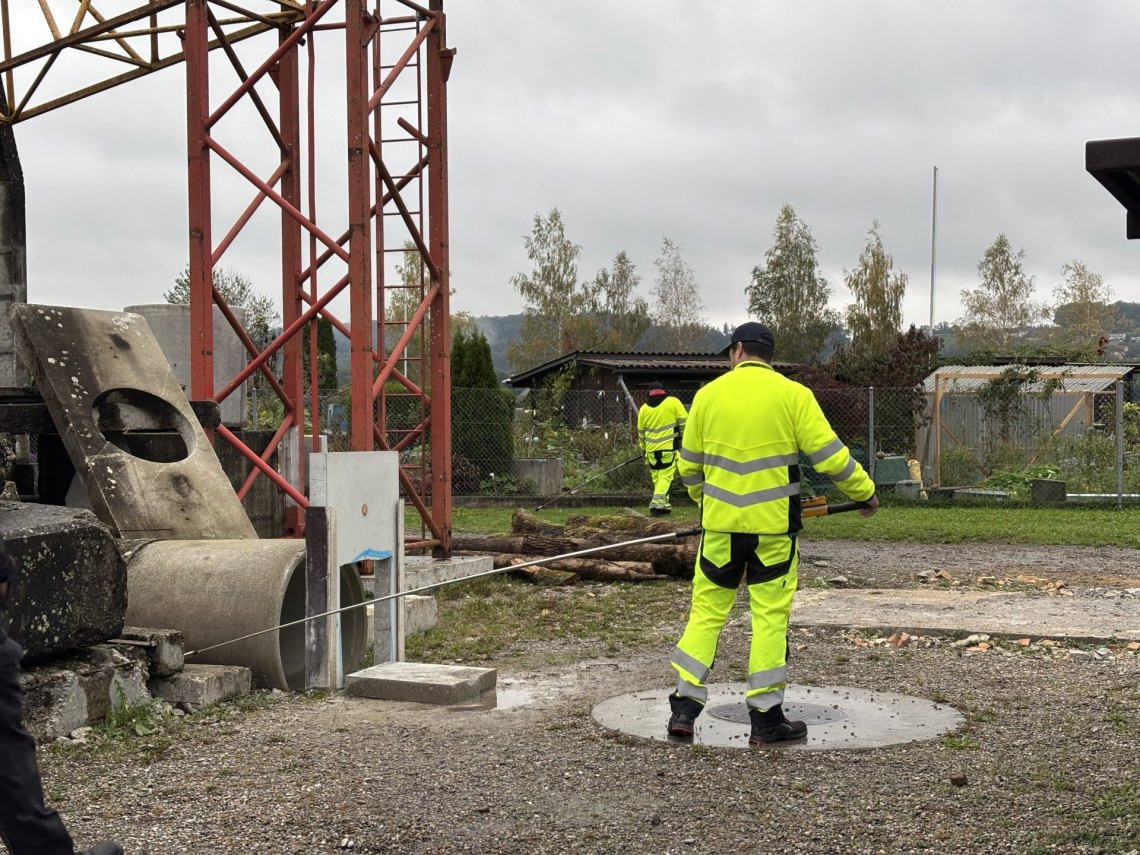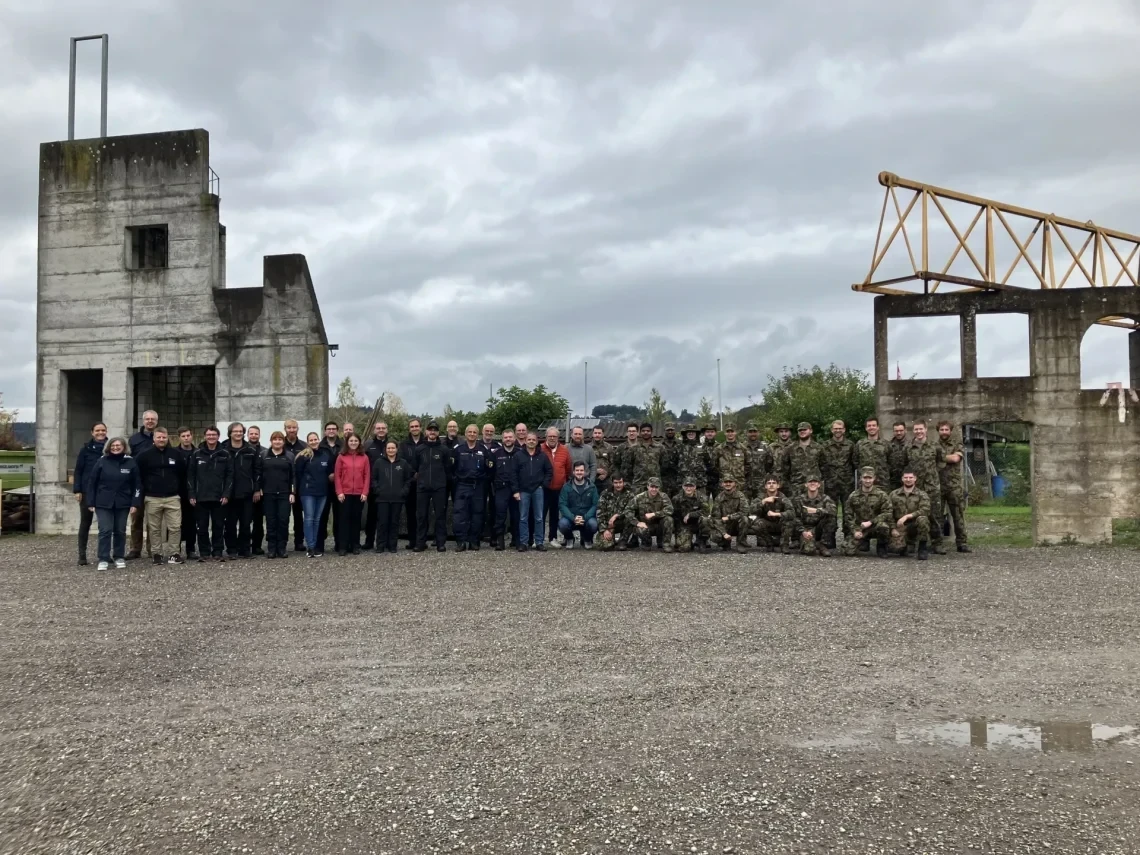SPENCER 2025 exercise: Successful trial of international cooperation
In September 2025 the National Emergency Operations Centre (NEOC) conducted a simulation exercise for a radiological accident in collaboration with partners from Switzerland and abroad. The SPENCER 2025 exercise tested processes, cooperation and operational readiness – from the IAEA’s international assistance mechanism to practical field measurements around Frauenfeld. The results show that cooperation generally functions well, and some areas for improvement were identified.
Preparing for an emergency
A radiological or nuclear accident requires swift action. It is crucial to assess the situation as quickly as possible: is there contamination, do areas or roads need to be blocked, are our own resources sufficient to assess the situation and remove hazardous substances?
The National Emergency Operations Centre (NEOC) manages the federal sampling and measurement organisation (MO) for this task. Regular exercises – a central pillar of civil protection – ensure its operational readiness.
SPENCER 2025: An international approach
In the SPENCER 2025 exercise, Switzerland played the role of a country experiencing a fictitious radiological incident and in need of foreign assistance for its response. In addition to national partners, teams from Germany, Austria and the International Atomic Energy Agency (IAEA) were also involved. The IAEA’s RANET mechanism served as the framework for cooperation, enabling member states to offer standardised services that can be requested by a country affected by an incident.
The exercise thus went beyond the usual procedures, providing not only realistic training in cooperation within Switzerland, but also in the involvement of international forces.
Two phases with clear objectives
SPENCER 2025 was divided into two parts:
- Process phase (8–19 September 2025):
In this phase, the administrative procedures – from the Request for Assistance to the Offer of Assistance and the internationally coordinated Assistance Action Plan – were successfully carried out.
- Deployment phase (23–25 September 2025):
The international measurement exercise was carried out in Frauenfeld. The focus here was on practical cooperation, including customs formalities and logistical aspects.
Realistic scenario as a basis
The scenario was based on the crash of a cargo plane with radioactive sources on board. The response teams had to locate and recover these sources in the wreckage and in the field, and check the area for possible contamination.

National partners in action
In parallel to the international exercise, the annual exercise of the measurement organisation took place on 24 September. Four national partners participated in this exercise scenario in Frauenfeld: two nuclear DDPS emergency response teams (A-EEVBS), the NBC EOD Centre of Competence of the Armed Forces and a team of specialists from the Federal Office of Public Health (FOPH) and the Paul Scherrer Institute (PSI). Other Swiss organisations were active at their respective locations and were coordinated by the NEOC.
Results and findings
The exercise showed that cooperation between national and international experts works well. Particularly positive aspects included the cooperative working methods of all parties involved, the functioning data exchange across different platforms and systems, and the successful processing of all measurement orders. The positive atmosphere among all participants allowed the foundations to be laid for further, much-desired cooperation.
Potential for optimisation was identified in the collection of data points and the processing and consolidation of data in its various formats. The existing processes and concepts can now be further developed on this basis.
Conclusion and outlook
SPENCER 2025 enabled Switzerland to strengthen its operational readiness in the radiological-nuclear field and consolidate its cooperation with the IAEA’s emergency coordination and with the radiological response teams of neighbouring countries. The objectives set – from process verification to practical field exercise – were achieved.
The findings are now being evaluated and will serve as a basis for future exercises and, not least, for strengthening the core mission of all those involved: civil protection.





